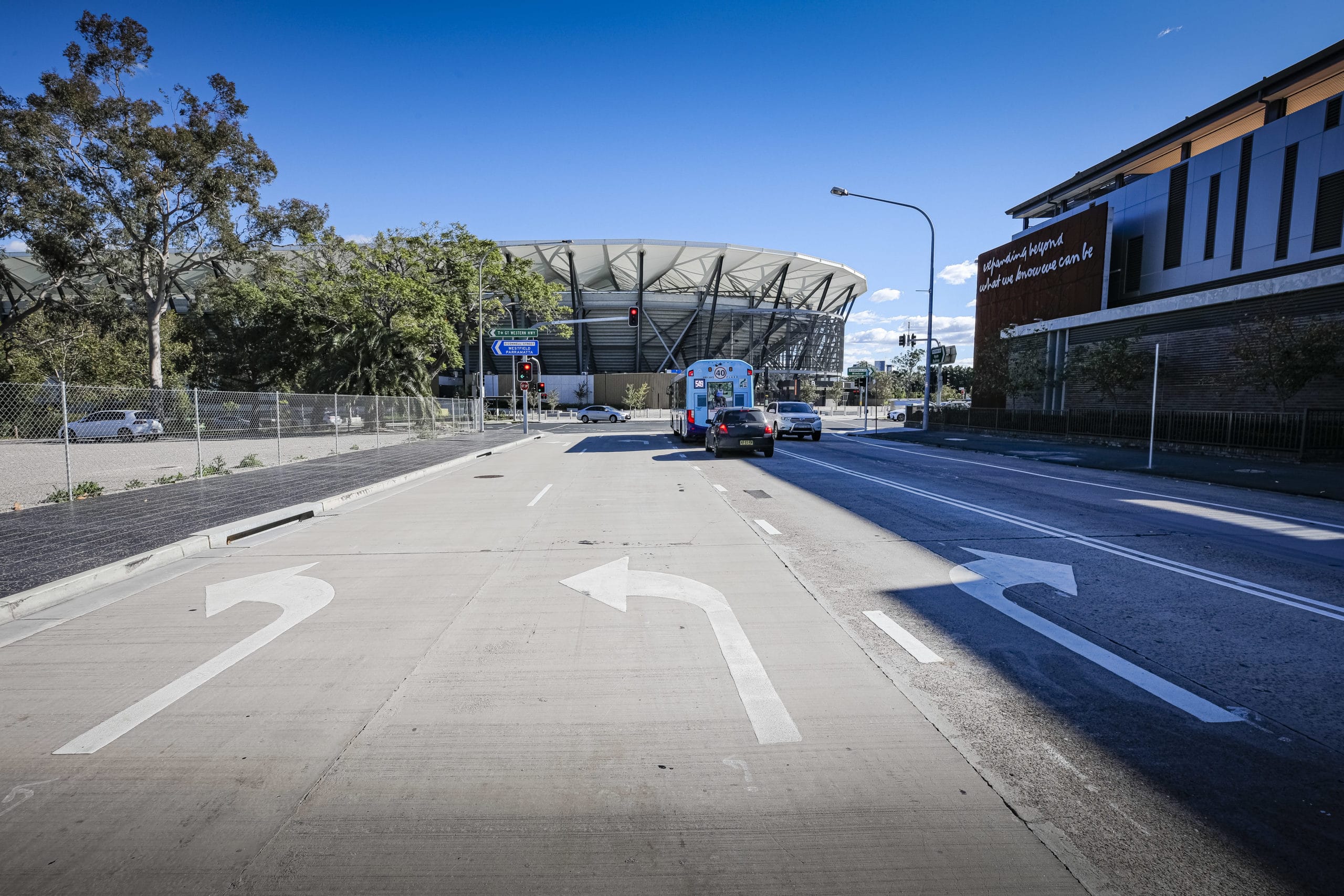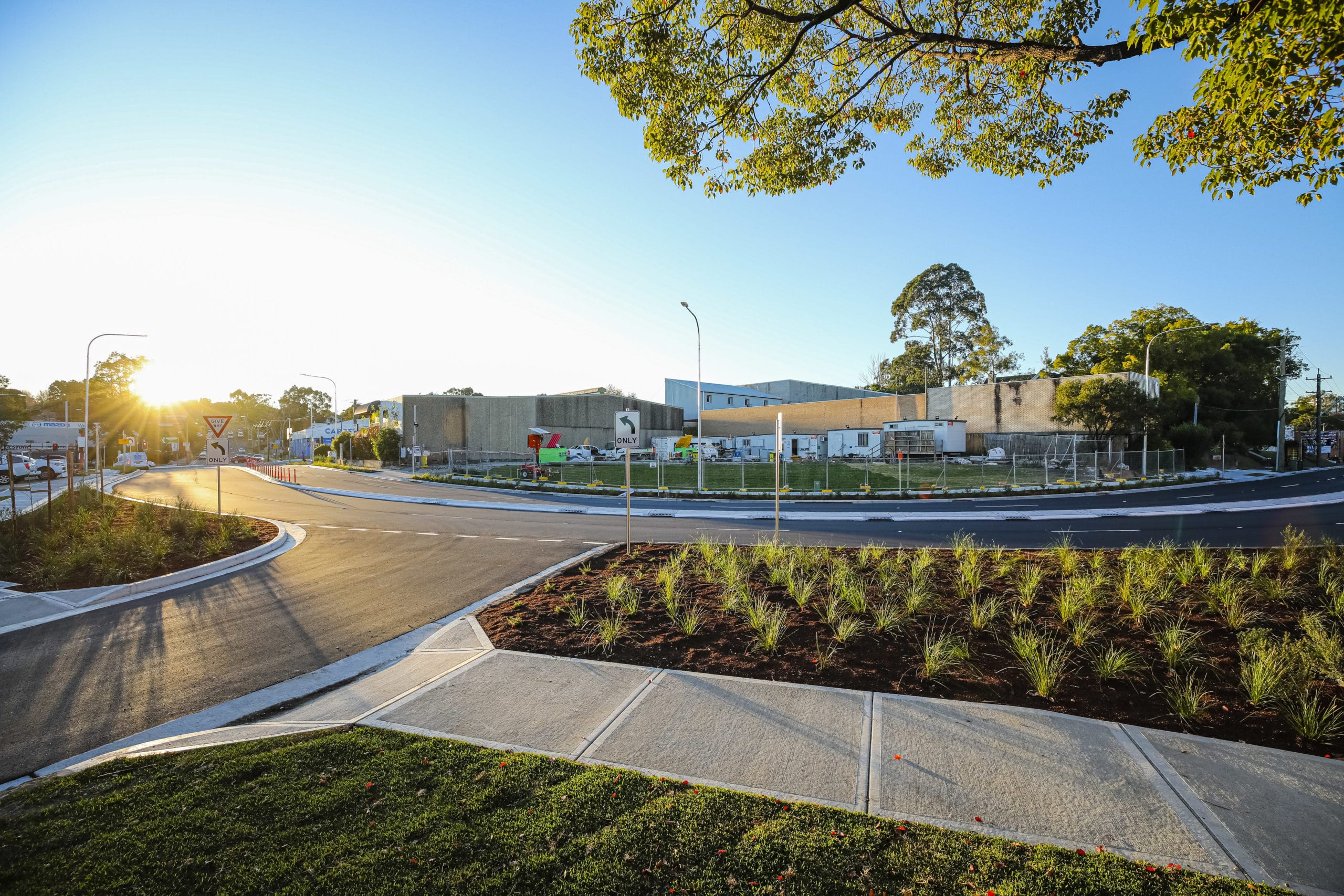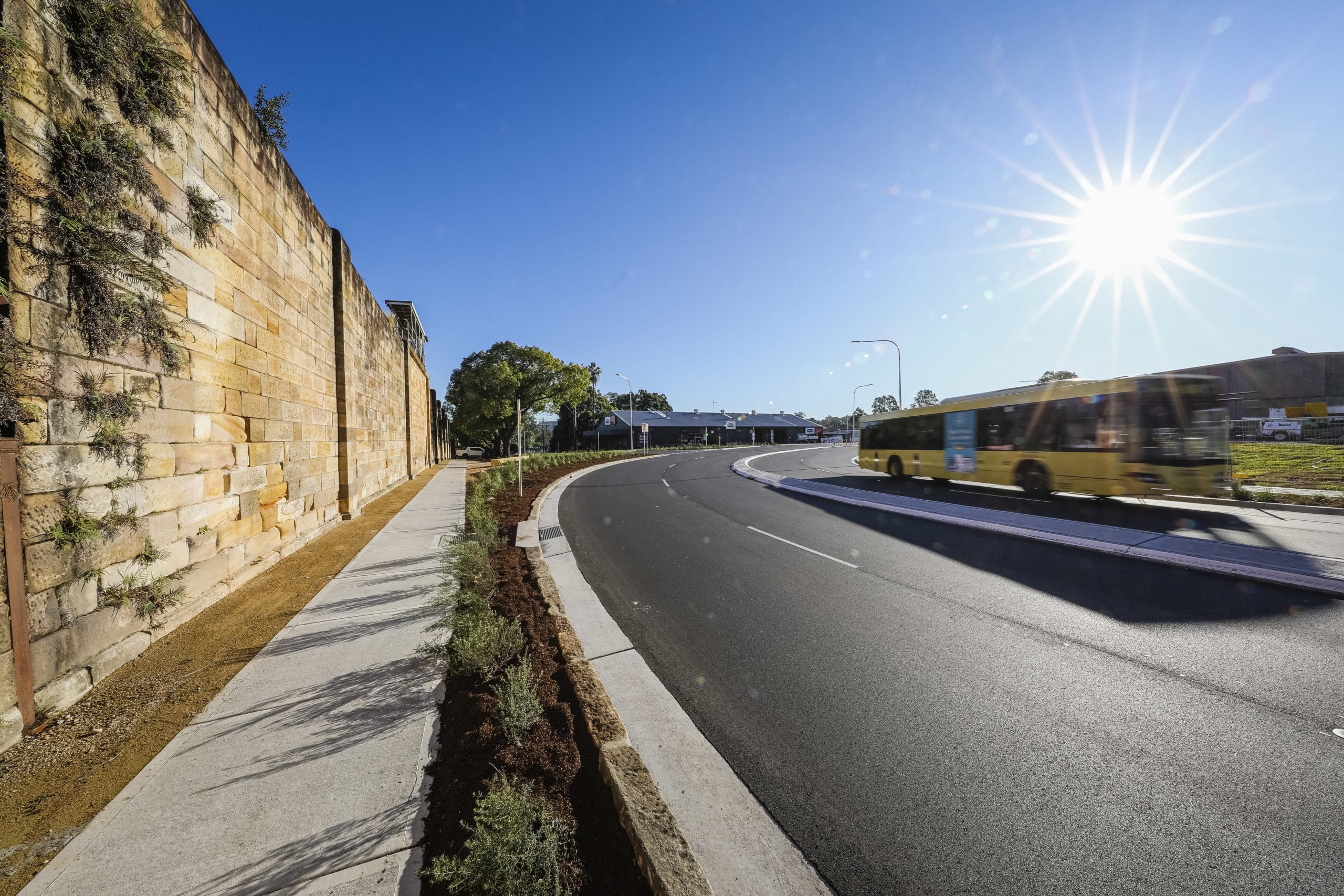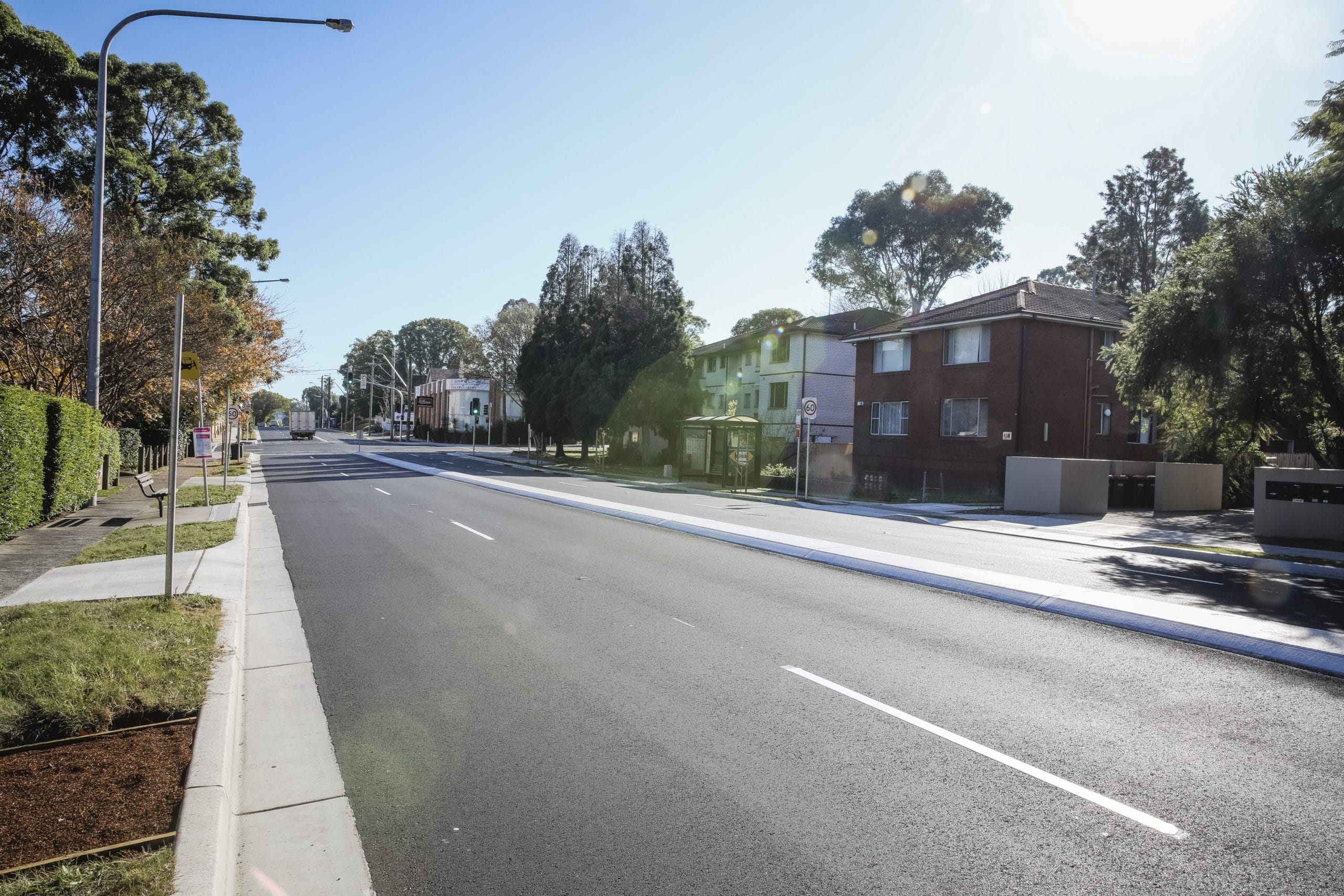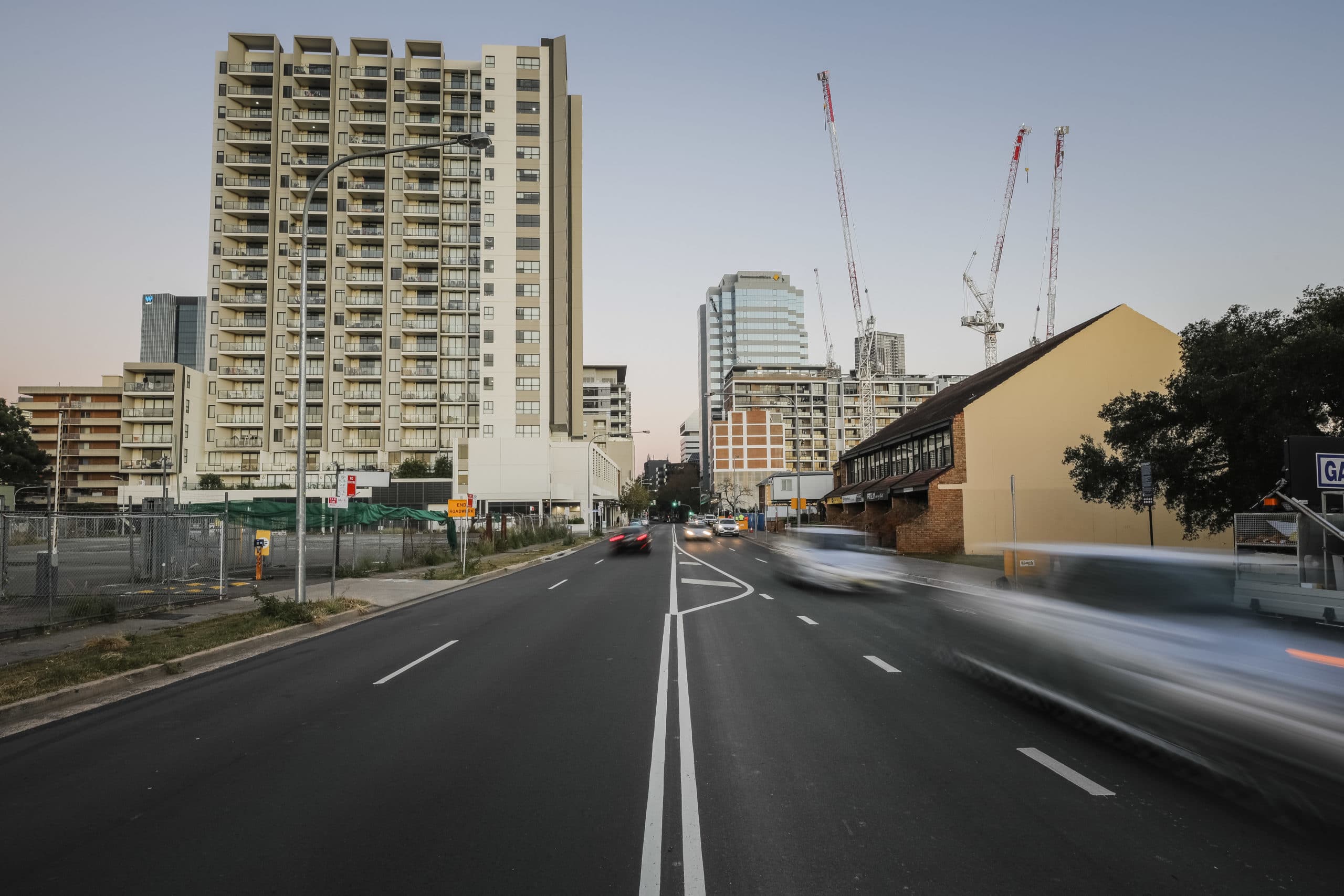The Enabling Works portion of Stage 1 of the Parramatta Light Rail involved the final design and construction of specific local road improvements and adjustments to maintain performance of the road network during light rail construction and operations. The Enabling Works will facilitate the later stages of the Parramatta Light Rail.
As part of the project, George Street in the Parramatta CBD become two-way and O’Connell Street in North Parramatta was widened to four lanes. Greater traffic capacity was also provided along Barney and O’Connell Streets in North Parramatta as an alternative to Church Street (where light rail will travel operate), to minimise disruption and improve traffic flow.
Project Highlights:
Highlight 1
- 35.2% reduction in water use across construction. Across the project, a number of initiatives were implemented aimed at reducing water consumption and increasing potable water replacement across the infrastructure lifecycle:
- Dust suppression – widespread use of geo fab and staged works to minimise uncovered areas
- Trench depth reduction - revision of scoped design to reduce trench depths including savings on vacuum excavation.
- Dry-vac trenching as opposed to hydro-excavation utilising joint venture partner Ward Civil’s dry vac truck technology.
*This reduction in water usage also led to award of an innovation point for exceeding the credit benchmark.
Highlight 2
- 28.7% reduction in energy use A number of initiatives were employed to achieve this result including:
- Use of LEDs over HPS lamps for streetlighting in replaced installations
- Trench depth reduction initiatives included revisions to scoped design of the utility trench depths to significantly reduce both fuel and materials required to complete the project works.
- Greenpower - all site offices and crib rooms utilised 100% certified green energy (energy from renewable sources) from the electrical retailer for the life of the project works
Highlight 3
Heritage Enhancement initiatives The project works not only monitored and demonstrated maintenance of heritage values, but in-line with the project Heritage Interpretation Strategy resulted in enhancement. This was primarily accomplished through the re-use of salvaged sandstone blocks from North Parramatta, which were utilised as curbing along O’Connell Street in North Parramatta and in works in the Queens Wharf Reserve in Parramatta. This re-use evidenced the incorporation and connection of the works to the historical remains and “enhancement” of heritage values at these locations as a result of the project works.

